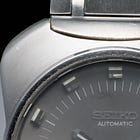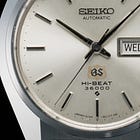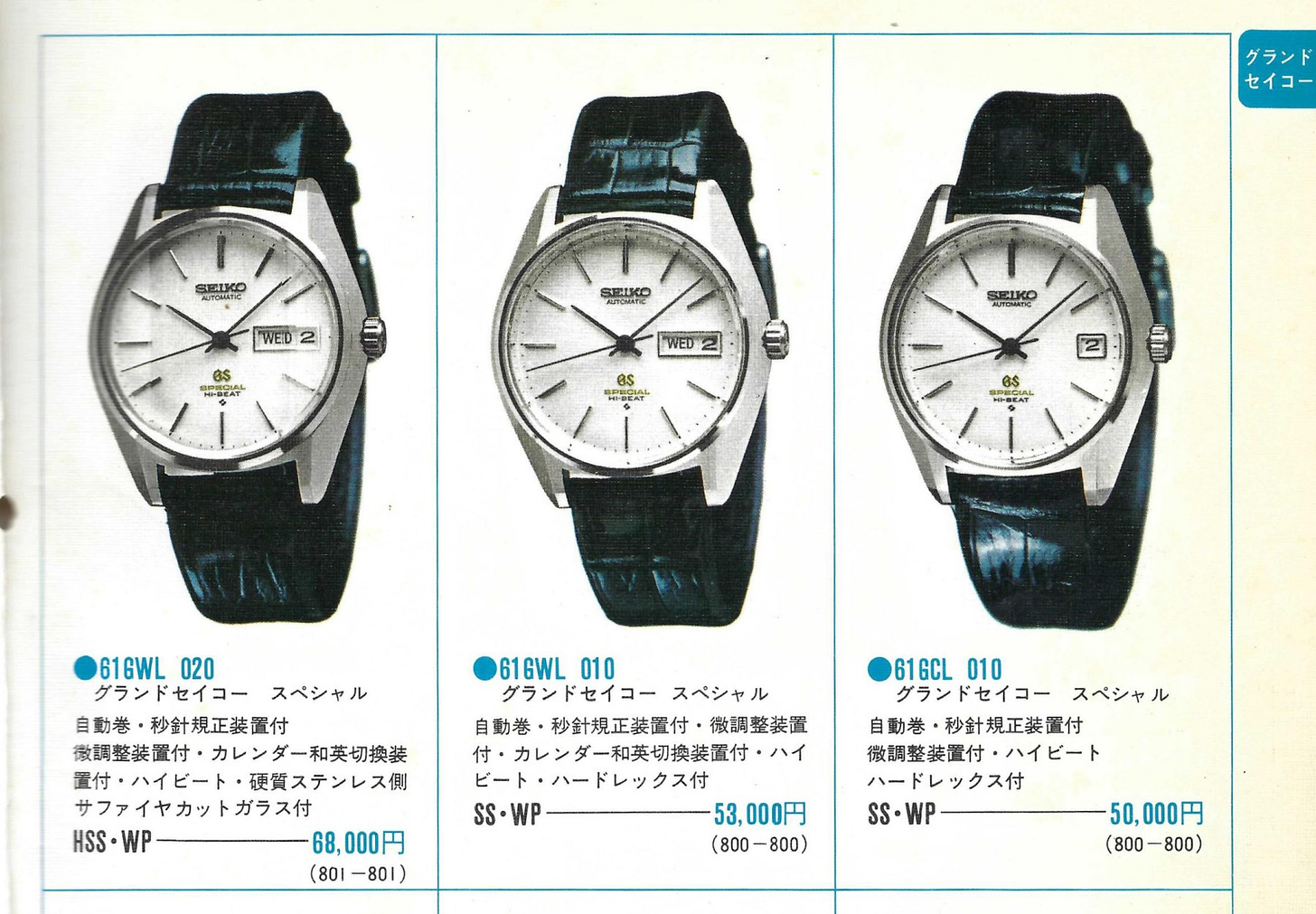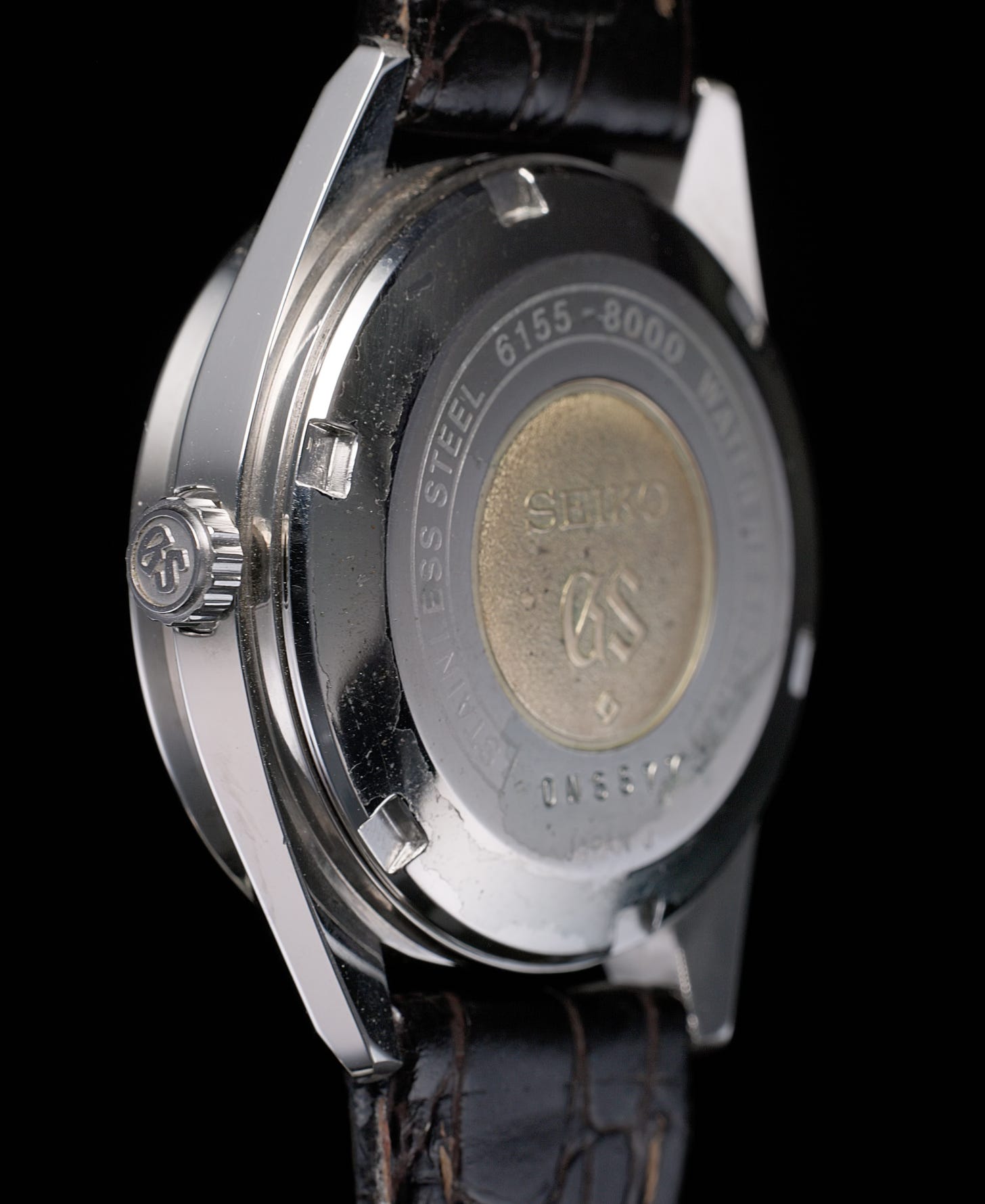Historical background
(My apologies - once again I skipped a week offering something for sale. Perhaps every fortnight is a more realistic schedule to keep to - time will tell!)
1969 saw the launch of both the mechanical Grand Seiko VFA’s and the world’s first quartz wristwatch, the Seiko Quartz Astron. Whilst the start of the “quartz revolution” can be dated precisely to December 25th 1969, it would actually be quite some time before quartz timepieces became ubiquitous.
Most will be aware that on its introduction the Astron was an extraordinarily expensive watch, retailing at 450,000 Yen. As a comparison, a 4580-7000 VFA was just 100,000 Yen. But what I suspect few people appreciate is that a quartz watch would not appear in a regular Seiko Catalogue until 1972, when Seiko offered the first steel cased quartz watches - two based a development of the Astron’s 35-series calibers, and two on the newly introduced 38-series. The cheapest of these references were the 3823-7000’s available with either a blue or white dial - priced at 135,000 Yen.
It wasn’t until 1973 - three full years after the launch of the Astron - that Seiko’s quartz offering really got going, with a range of 38-series based watches with prices starting at 64,000 Yen.
Putting 18K gold cased watches aside, the launch of the four VFA’s in the 1969 Seiko Special Luxury Catalogue introduced a much higher price point for Grand Seiko references, with the aforementioned 4580-7000, along with the 6185-8020, being the ‘cheapest’ of the quartet at 100,000 Yen. The next most expensive steel cased Grand Seiko at the time were the 6146-8020’s, which were priced at just 44,000 Yen.
Clearly there was a significant “hole” in the price point architecture of the Grand Seiko range to fill between the most expensive regular 614x-based reference and the cheapest VFA, and in the 1970 catalogue that hole was filled by the “Arabesques”, with their faceted sapphire crystals and hardened steel cases, offered at 60,000 Yen - no less than a 50% premium over the price of a regular 6146-8000.
The Arabesques were however very short lived - perhaps the powers that be at Grand Seiko felt that there was a another hole to fill in the range, that being the difference in chronometric performance between the VFA’s and their promised mean daily rate of +/- 2 seconds per day, and the rest of the range which adhered to the Grand Seiko Standard of -3 to +5 seconds per day.
And thus were born the “Specials”.
The scan above is taken from the debut of the Specials in Seiko’s 1971 Number 1 catalogue, and shows the three watches in the range - from left to right, the 6156-8010, the 6156-8000, and the 6155-8000.
It is interesting to consider the watches’ features and pricing since the range had a number of functions to fulfill. All three watches were based on the 615x calibers (6155 with time and date, 6156 with time and day-date) which were regulated to the new “Grand Seiko Special Standard” with a mean daily rate of +/- 3 seconds per day - a 6 second range that fell exactly halfway between 8 second range of the regular Grand Seiko Standard, and the 4 second range of the Grand Seiko VFA Standard. Additionally, the 6156 day-date caliber offered quicksetting on both the day and date, and a bilingual day wheel, whereas the 6146 caliber only had quicksetting on the date, and its day wheel was only in English.
If we compare the 6145-8000 to the 6155-8000, and the 6146-8000 to the 6156-8000, the premium for the ‘Special’s was 13,000 Yen, or approximately one third more expensive. But there is still quite a way to go to the cheapest VFA at 100,000 yen, which perhaps explains the rationale for the existence of the 6156-8010 priced at 68,000 Yen.
The 6156-8010 clearly was considered as both an aesthetic direct replacement for, and chronometric upgrade of, the Arabesques, since it featured both the hardened stainless steel case and faceted sapphire crystal of the watches it replaced, and upgraded the movement to that ‘Special’ standard.
The Specials remained in the Grand Seiko range all the way to the very end of the vintage GS era, with the 6156-8040 being the very last Grand Seiko reference to be introduced at the very end of 1974.
The 6155-8000, of which a rather spectacular example is offered for sale here, made its final appearance in a Seiko catalogue in the first volume of the 1975 catalogue.
As mentioned earlier, even as late as 1973, the cheapest available quartz watch from Seiko was priced at 64,000 Yen. By the end of 1974, the price to strap a quartz watch to your wrist was down to 42,000 Yen - undercutting every remaining mechanical Grand Seiko in the range, and a year later it was just 32,000 Yen.
Case
When it comes to vintage Grand Seikos there is really just one thing that can separate a 98th percentile watch from a 99th percentile1 one - and that’s the presence of the original caseback protection sticker.
It quite simply doesn’t get any better than this.
Dial
Immaculate.
Movement
As per usual, on confirmation of wiring of funds, the watch will be sent to my watchmaker for a complete movement overhaul.
Price
Listed at US$3,000 (including worldwide fully insured courier delivery), this watch is available to paid subscribers at a discounted price of $2,700, and founding members at a discounted price of $2,550.
This newsletter is being sent out initially to paid and founding members, and will be forwarded to all subscribers on November 13th.
Any questions, don’t hesitate to comment below, or drop me an email.
There is no such thing as a 100th percentile - 99th is as good as it can get.









SOLD - Grand Seiko 6155-8000 "Special"